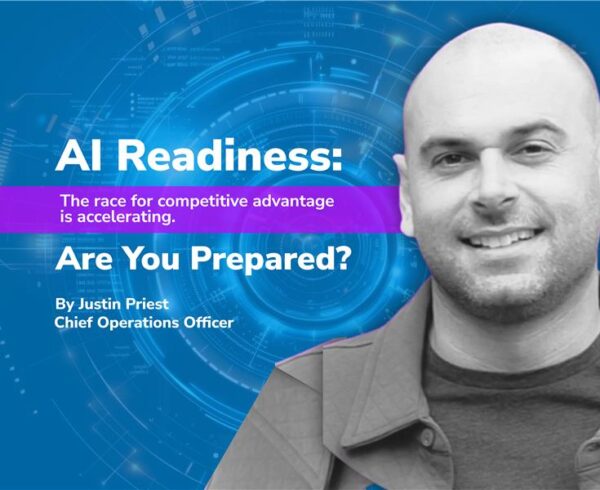The landscape of the artificial intelligence (AI) workforce continues to reveal a significant imbalance. Currently, a staggering 71% of the AI workforce is male, leaving just 29% filled by women. This disparity goes beyond a diversity issue—it’s a missed opportunity to harness a broader range of perspectives and talents in shaping the future of AI. At ConsultNet, we are committed to addressing this imbalance with actionable steps that build a workforce inclusive of women at every level—from the C-suite to frontline teams.
Lately, I’ve been speaking with technology executives who share concerns about closing this gap. Many leaders face challenges such as finding qualified female candidates, retaining the women they hire, and fostering environments where they can thrive. They want guidance on creating inclusive learning paths and opportunities for women in tech, from entry-level roles to executive positions. The need for change is clear, and the statistics underscore the urgency:
-
- Despite women making up nearly half of the U.S. workforce, they account for only 26% of roles in data and AI.
-
- For every 100 men promoted to manager, only 52 women receive the same promotion in tech.
-
- Women earn just 18% of computer science degrees, and this number is even lower for women of color, with Black and Hispanic women representing only 6% of these degrees.
These numbers are concerning but serve as a wake-up call. If we want to harness AI’s full potential, we need to create inclusive, robust pathways that support women in tech. So, what can companies do to close this gap and make AI an inclusive space for women? Here’s what we’ve found to be effective and what we’re advocating for our partners.
1. DEVELOP TAILORED LEARNING PROGRAMS FOR ALL LEVELS
One question I hear often is, “How do we make sure everyone is set up for success with AI skills, from executives to entry-level employees?” Tailored learning programs are the answer. By offering executive coaching, strategic insights, and role-specific learning paths, we empower women to excel in AI. This includes customized pathways in machine learning, data science, and AI ethics. Our own experience has shown that when women receive this targeted training, they feel more confident and are better equipped to lead in AI roles.
2. INCREASE ACCESS TO EXECUTIVE MENTORSHIP AND SPONSORSHIP
When I talk to our clients, they often tell me mentorship is a challenge, especially for women in tech. Programs that connect women with senior leaders are essential. These mentors provide guidance, advocacy, and crucial support. One suggestion is to launch a mentorship program that pairs emerging female talent with experienced leaders in AI and tech, creating a structured path for professional growth and championing their advancement within the company.
3. CULTIVATE AN INCLUSIVE CULTURE ACROSS ALL TEAMS
Research shows that women in tech often leave by age 35, citing non-inclusive environments as a primary factor. Building an inclusive culture goes beyond hiring diverse talent; it requires ongoing education and engagement to make all employees feel they belong. Prioritizing inclusivity training across teams, focusing on unconscious bias and fostering a work environment that celebrates diverse voices and perspectives can help cultivate this inclusive culture.
4. IMPLEMENT CLEAR CAREER PATHWAYS AND SUPPORT SYSTEMS
Lack of transparency in career progression is another issue I hear about frequently. Women are often unclear about what’s next in their careers, especially in emerging fields like AI. Our solution is to create structured career pathways for AI roles, allowing women to see a clear line of progression. Additionally, flexible work options and support for personal responsibilities—like childcare services—help ensure that women can grow in their careers without sacrificing family commitments.
5. ESTABLISH TARGETED RECRUITMENT AND RETENTION GOALS
Setting tangible recruitment and retention goals is something every company can implement to track progress. This can be accomplished by reviewing recruitment data quarterly to maintain focus on diversity. At ConsultNet we actively connect with women in STEM groups, universities, and professional organizations to build a pipeline of qualified female candidates. This proactive approach has helped us attract and retain talented women in AI, setting an example that I encourage other companies to follow.
6. SUPPORT CONTINUOUS LEARNING AND DEVELOPMENT FOR AI SKILLS
Clients frequently ask, “How can we keep up with the rapid pace of AI?” The answer is continuous learning through AI training programs that are role-specific and updated regularly to reflect the latest advancements in AI and machine learning. This approach equips women to stay at the forefront of AI developments, positioning them to lead the way. Offering certifications, hands-on projects, and leadership opportunities prepares them to take on high-impact roles.
7. ENCOURAGE WOMEN’S PARTICIPATION IN AI AND TECH COMMUNITIES
Community is a powerful motivator, and companies can support women by connecting them to professional networks. By sponsoring memberships to AI and tech groups, such as Women in AI and AnitaB.org, which allow female employees to attend conferences, participate in hackathons, and engage with other women in the industry. These experiences provide invaluable learning and networking opportunities, helping women feel more connected and invested in their careers.
Creating a more inclusive AI workforce requires ongoing commitment and collaboration. By implementing these strategies, companies can help build a future where AI technology reflects diverse perspectives, fostering greater innovation and impact. Supporting women in tech today ensures a stronger, more equitable AI industry for the future.






